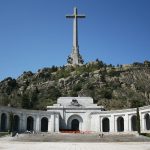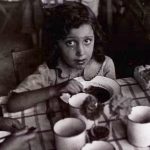THE Spanish Civil War (1936-1939) is considered one of the crucial events of 20th century European history and, apart from the Second World War, no other conflict has inspired so many books. Since 1972, more than 1,200 publications related to the war in some way have been given ISBN numbers. They range from traditional and oral histories of the conflict to novels and biographies. One of the interesting things is that English and American authors have written many of them. These works also create a symbolic battleground on paper because they are written from so many diverse perspectives and ideological viewpoints.
A large number of writers actually came to Spain and actively participated in the struggle. Some of them lost their lives in doing so. Not only was this an explosive and terrible civil war in all its tragic consequences, it was also a focus for the ideologies of the time. An extreme right-wing fascism was gaining ground in Europe with Hitler and Mussolini, while an equally extreme left-wing communism was taking hold in Stalin’s Russia. In a reaction against fascism, there was a swing towards socialist and Marxist ideas among many socially and politically aware people, especially the young.
The attention of left-wing idealists had been attracted by Spain’s Republican government. In a very short time, this had attempted to create a modern democracy in a country still dominated by a feudal social structure. The Republicans had given the vote to women, legalized divorce, restricted the power of the most conservative elements of Spanish society, the Church and the landowners and – emphasising the importance of culture and education – had built thousands of schools all over the country. These moves towards a greater social equality seemed to offer a hopeful example for the future.
But the Republicans had made enemies at home and, when the war broke out with Army General Francisco Franco’s coup on July 18, 1936, they found no allies among the important democracies in Europe. More preoccupied by the growing power of communism than the rise of fascism, England adopted a policy of non-interference and even formed a Non-Intervention Pact with other European countries. Although Italy and Germany joined this pact, this did not stop Hitler and Mussolini from sending a large quantity of arms, tanks, aeroplanes, trained soldiers and technicians to Franco in Spain. In author George Orwell’s view, this won the war for him. The only support against Franco the Republic could find came from Stalinist Russia.
Volunteer writers
Thousands of volunteers who wanted to take part in the struggle against fascism and felt the future of Europe was at stake, poured into Spain to join the various International Brigades created by the Russian Comintern [the Vladimir Lenin formed Soviet war machine]. Authors André Malraux, WH Auden, John Dos Passos and Ernest Hemingway, for instance, all foresaw the Spanish Civil War as potentially leading towards another global war. There were also foreign volunteers, such as the South African poet Roy Campbell, fighting on Franco’s side along with the German, Italian and Moroccan soldiers.
But what at first sight seemed a straightforward struggle between left and right-wing forces was in reality much more complicated. The Nationalists were strongly united around Franco as their leader, but there was a secret battle for control going on among the Republicans. They were divided among themselves, mainly into Anarchist, Socialist and Communist factions, all with different aims and interests. International participation added to the complexities. George Orwell, who joined the International Brigades under the POUM “Trotskyites,” could hardly believe his eyes when he saw young, idealistic men and women, in Spain to fight fascism, being hunted down, imprisoned and killed by Stalinist agents who were supposed to be on the same side. Friends of Orwell’s disappeared and died. He and his wife were lucky to escape.
The role of the written word
Books have played an important role in helping to clarify the complications of the Civil War and to recuperate truths and historical facts from the confusions of propaganda. Arthur Koestler’s Spanish Testament, published in 1937, was one of the first books to appear. It describes what he saw of the war, his false imprisonment as a communist spy and his failed death sentence. The Spanish Cockpit by Franz Borkenau was published in the same year. Borkenau, an Austrian doctor, recorded his visits to Spain during the early part of the war and the book gives a good picture of the political situation. George Orwell, whose Homage to Catalonia came out in 1938, describes war-time Barcelona and his harrowing time as a soldier at the front in the north.
This was followed in 1943 by Gerald Brenan’s The Spanish Labyrinth. Gerald Brenan, who was living in a village near Málaga when the war broke out, witnessed its beginnings in the south at first hand. He and his wife Gamel Woolsey, who wrote a personal account of their experiences in Death’s Other Kingdom, were amongst the last foreigners to leave Spain when living conditions became too difficult. Back in England, wanting to understand the reasons for its outbreak, Brenan wrote The Spanish Labyrinth, an investigation into the war’s social and political background. This seminal work is essential reading for the understanding of the causes that led to the Civil War.
A generation of books by English and American historians followed: The Spanish Civil War by Hugh Thomas in 1961, The Spanish Republic and the Civil War by Gabriel Jackson in 1965 and Raymond Carr’s Spain 1808-1939 in 1966. These were the pioneers. Still excellent reading, still interesting, still valid, even though new material has come to light since they were written. In 1973 came Herbert Southworth’s The Myth of Franco’s Crusade, which breaks down the propaganda-based arguments used by Franco’s historians to justify his actions.
One of the most outstanding publications up till now is Paul Preston’s The Spanish Civil War (1986), a wonderful book of analysis that takes a look at the Republic’s revolutionary ideas. Concise, clear and to the point it is essential reading for beginners.
History told
For those more inclined to read the “revisionists,” who interpret events from a more Nationalist side and see the Republic as a cause of the Spanish Civil War, there is Stanley G. Payne’s The Spanish Revolution. A Study of the Social and Political Tensions that Culminated in the Civil War in Spain (1970). A more recent book is Anthony Beevor’s revised and updated Battle for Spain : The Spanish Civil War, 1936-1939 (1983). One of the most complete works published so far, the author gives vivid accounts of the battles and tries to keep an impartial balance between the two sides. This is an important work for going more deeply into the subject.
Apart from straightforward history, there are other approaches, such as Ronald Fraser’s 1969 vivid oral history, Blood of Spain, the Experience of Civil War, in which individuals on both sides recount their personal experiences. Ian Gibson’s The Death of García Lorca is a great work of research into the death of the poet at the hands of a group of Falangists on the Nationalist side. For more autobiographical accounts, there is George Orwell’s already mentioned classic, Homage to Catalonia and Woolsey’s gem, Death’s Other Kingdom as well as Dos Passos’ Journeys Between Wars and Koestler’s Spanish Testament.
Illicit titles
If you prefer novels, one of the best-known is Ernest Hemingway’s For Whom the Bell Tolls, the story of an American teacher of literature who goes to Spain to fight Franco. It gives a romantic picture of the Civil War and of the Spanish people, who are seen as being capable of extreme generosity and extreme cruelty. It was during the Spanish Civil War that the figure of the war photographer emerged, the most famous of them being Robert Capa, whose work on Spain is collected in The Heart of Spain.
Most of these works were prohibited by the powerful censorship of the Franco regime. The only books available then were written by Franco’s followers and, as they were intended as propaganda, they were far from objective. The prohibited books were usually printed in France or South America and the relatively few copies that crossed the border were secretly distributed on the black market in the most clandestine circles. These books became legal in Spain after Franco’s death in 1975.
Only since then, with the opening up of the country towards political liberty, have Spanish people been able to read freely about their own recent past. Initially, it was through foreign writers they could look back at the chaotic years of the Civil War and get some perspective on what had happened. But now Spanish historians are taking over and quantities of new books are being published. Obituary notices in memory of groups and individuals killed during the war have been appearing in the newspapers, as if painful memories buried for so long, were now re-emerging with the war’s 70th anniversary and the tide of new publications. None of its crimes or their perpetrators have been pursued or taken to justice, but the Civil War’s wounds are still bleeding. The time has come for Spain to examine its own recent history for itself.



